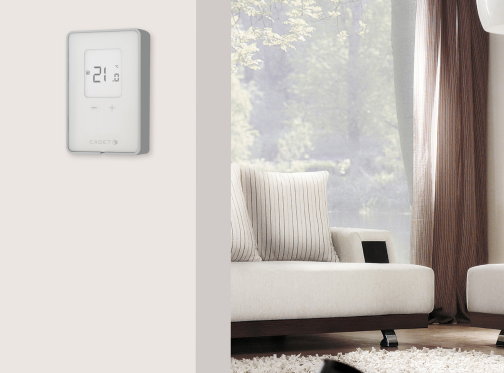
Upgrade Your Smart Thermostat to an Electric Thermostat
Smart Thermostats can be used with our electric baseboard or wall heaters, but are no longer as compatible with our products as an electric thermostat and here's why.
Why Smart Thermostats are no longer compatible with our products.
Previously we've been in discussions with Honeywell to get more solidified recommendations on specific relays and thermostats that can be made to work with line voltage heaters. We even began the process of bringing new parts and products into our system so we could sell the solution directly. Along the way, we learned that the relays Honeywell was recommending for this install don’t actually provide enough power to support smart and Wi-Fi thermostats for the long term. Even though we have performed successful testing with the Lyric and Nest thermostats in our engineering lab, we have concerns about the ongoing reliability and durability of this workaround. We suspect running a smart thermostat with one of these relays as the power source may lead to the draining of the thermostat’s internal batteries.
The Honeywell, Lyric, Nest and other smart thermostats are designed to work with central home heating systems. Those are controlled by low voltage thermostats, which use 24 volts. Electric baseboard and fan heaters work with line-voltage thermostats, which can be either 120 or 240 volts. If you hooked up a low-voltage thermostat directly to one of our heaters, it would fry the thermostat. Not the best way to spend $250. But that's where relays and transformers come in. The transformer converts the line voltage power into low voltage power to provide energy to the relay and the thermostat. The relay is then a bridge between the thermostat and the heater, allowing the low voltage thermostat to control the line voltage heater. (Keep in mind that you'll need one smart thermostat for each older thermostat you are replacing.) You'll want to ensure that you have a properly sized relay to provide power to your heater. You'll also need to get a properly sized transformer to power your relay and thermostat. (This is where you'll need to consult your thermostat, relay and transformer manufacturers.) You also need to check and make sure your transformer and relay work with your heater's voltage.
Why We Recommend Switching to an Electric Thermostat
We believe that electric thermostats are a better option to use with our heating products; Firstly, our electric baseboard and fan heaters typically work with line-voltage heaters, which allow for the transformer to produce energy. This makes the heater work much more efficiently. Secondly, electric thermostats have digital sensors that are much more accurate and responsive. This decreases the likely hood of your heater having large temperature swings. Lastly, electric thermostats not only provide outstanding comfort but are also cost-effective as they are programmable and pay for themselves because of the energy savings.

How to Install a Thermostat:
The installation process will depend on what thermostat, relay, transformer and heater you have in your home, but here's how it will work in general:
-
The relay and transformer will need to be installed somewhere out of the way that is still accessible (like inside a closet, in a crawlspace or in an attic).
-
Line voltage wires will run from your circuit to the relay/transformer.
-
Line voltage wires will then go from the relay to the heater; all line voltage connections with the relay must be made inside a surface-mounted metal junction box.
-
Low voltage wires will be connected to the relay/transformer (outside of the junction box with the line voltage connections) and will run through the wall to the thermostat, which will be installed on the wall. The relay turns the heater on or off using the signal from the thermostat.
In summary, we at Cadet believe that an Electric thermostat is a better alternative than using a smart thermostat. We recommend the Cadet TEP Series Programable Electronic Thermostat. For more information on electric thermostats, check out this other Upgrading to a New Electric Thermostat!

